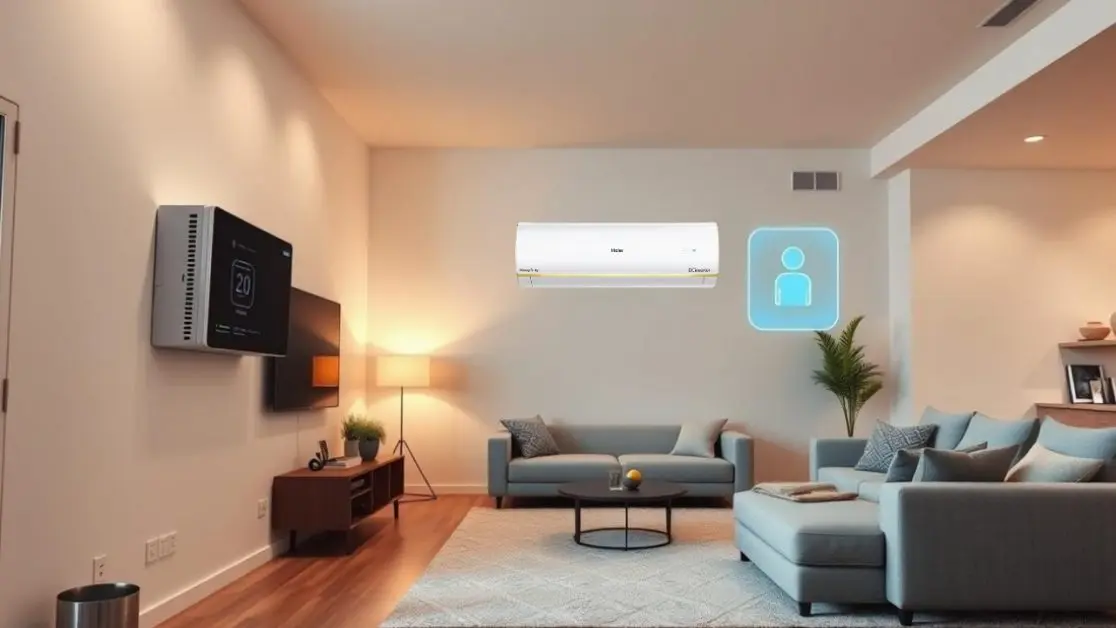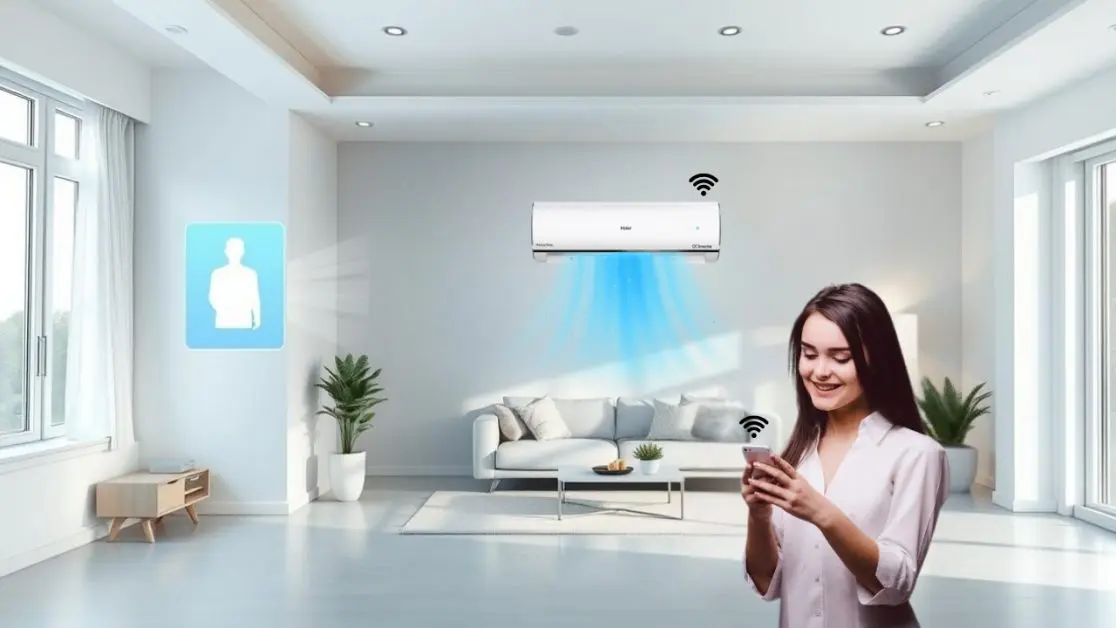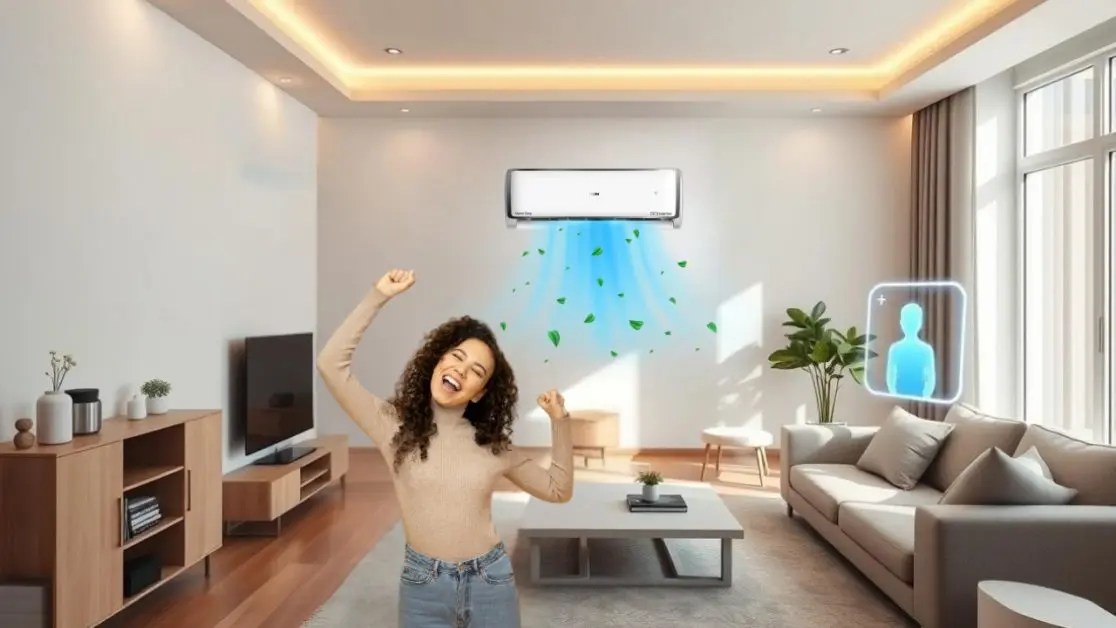Energy-related expenses and pollution are becoming pressing issues for both individuals and businesses, making energy efficiency more critical than ever. In both residential and commercial buildings, air conditioning units are among the largest energy consumers.
Traditional cooling systems that rely on manual or scheduled operation do not adjust dynamically to room occupancy, leading to energy waste as cooling is provided even when it is not needed.
AI-driven occupancy detection can optimize energy consumption for air conditioners by ensuring cooling is only provided when required.
Implementing AI technology can significantly improve energy efficiency and indoor comfort levels for both households and businesses.
Understanding AI-Driven Occupancy Detection
Artificial Intelligence (AI) occupancy detection systems integrate advanced AI technologies and automation to autonomously determine whether a particular zone is occupied and manage air conditioning (AC) temperature settings accordingly. AI-driven systems leverage sophisticated sensors, data analytics, and algorithms to monitor and control human presence in real time.
Key Technologies in AI-Driven Occupancy Detection
- Motion Sensors: Detect movement in a specific area and communicate with the AC system.
- Infrared Sensors: Identify heat signatures, distinguishing between people and inanimate objects.
- Computer Vision: AI-powered cameras detect human presence and behaviors.
- IoT Integration: Smart appliances provide occupancy information for enhanced energy management.
- Machine Learning Algorithms: Analyze historical usage data to predict cooling demands and proactively adjust settings.
The integration of these technologies allows AI-based occupancy detection systems to improve efficiency and reduce energy consumption while maintaining comfort.
How AI Reduces Energy Consumption of Air Conditioners

1. Real-Time Adjustments
Traditional air conditioning systems operate on fixed schedules, leading to energy waste by cooling unoccupied spaces. AI-driven systems eliminate this inefficiency by continuously monitoring occupancy and adjusting cooling levels accordingly. When no one is present, the system either reduces cooling or turns off the AC to save energy.
2. Usage Pattern-Based Predictive Cooling
Machine learning algorithms analyze historical occupancy patterns to predict when a space will be occupied. For example, if a room is typically used from 9 AM to 6 PM, AI can pre-cool it before occupancy and reduce cooling when it becomes vacant. This strategy optimizes both comfort and energy savings.
3. Zonal Cooling for Maximum Efficiency
AI-powered AC systems enable zonal cooling, where spaces are divided into sections that receive independent cooling. Unlike conventional systems that cool entire buildings, AI ensures that energy is only used in occupied zones, leading to significant electricity savings.
4. Integration with Other Smart Devices
AI-powered AC units can communicate with other smart home devices. For instance, if an AI system detects an open window, it can pause the AC to prevent energy waste. Additionally, it can integrate with lighting and ventilation systems to enhance overall efficiency.
5. Remote Monitoring and Control

AI-driven occupancy detection allows users to monitor and adjust their AC units remotely via smartphones. This is particularly beneficial for businesses with large office spaces, where cooling can be efficiently managed based on occupancy.
6. Weather-Based Adaptive Cooling
AI-enabled AC systems analyze real-time weather data to adjust cooling intensity accordingly. During cooler temperatures, they can reduce AC usage and take advantage of natural ventilation to minimize energy consumption.
7. Personalized Cooling Preferences
AI-powered systems learn from user behavior to optimize cooling management. If a person prefers a specific temperature at certain times, the system can adapt accordingly, ensuring personalized comfort without excessive energy use.
8. Adaptive Cooling Based on Occupancy and Activity Levels
AI-driven systems can differentiate between single and multiple occupants and adjust cooling intensity based on activity levels. For instance, if a group of people is exercising, the system increases cooling, whereas it reduces cooling when occupants are resting.
Advantages of AI-Driven AC Energy Optimization

1. Significant Cost Savings on Electricity Bills
By optimizing cooling usage, AI systems can reduce energy consumption by 30-50%, resulting in substantial cost savings on electricity bills.
2. Enhanced Comfort and Convenience
AI systems provide a seamless and comfortable indoor experience by intelligently adjusting cooling based on user behavior and preferences.
3. Reduced Carbon Footprint
Lower energy consumption directly reduces greenhouse gas emissions, contributing to a cleaner and more sustainable environment.
4. Extended Appliance Lifespan
Reduced operational stress on AC units minimizes wear and tear, extending their lifespan and lowering maintenance costs.
5. Streamlined Automation
With AI-driven automation, users no longer need to manually adjust temperature settings, making cooling systems more efficient and hassle-free.
Challenges and Considerations
Despite its numerous advantages, AI-based occupancy detection for AC optimization presents certain challenges:
- High Initial Costs: AI-integrated AC units and smart sensors require a higher initial investment, though they lead to long-term savings.
- Privacy Concerns: AI-powered monitoring, especially with computer vision, raises concerns about user privacy. Strict data protection policies are essential to gain user trust.
- Dependence on Reliable Internet Connectivity: AI-enabled systems often rely on cloud computing and IoT technology, requiring a stable internet connection.
- User Resistance to Change: Some users may be reluctant to transition from traditional cooling practices to AI-based automation. Educational resources and user-friendly designs can facilitate adoption.
- Potential for Overcorrection: AI systems may misinterpret human activity, leading to unnecessary cooling adjustments. Continuous system refinement is necessary to improve accuracy.
The Future of AI in AC Energy Optimization
The integration of AI technologies in AC and HVAC (Heating, Ventilation, and Air Conditioning) systems is expected to accelerate in the coming years. Advances in AI predictive analytics, cloud computing, and edge AI will drive further improvements in energy efficiency. As AI-powered climate control systems become more affordable, their adoption in residential and commercial buildings will increase.
In a country like India, where rising temperatures and increasing AC usage are concerns, AI-driven occupancy detection can play a crucial role in demand-side energy management and efficiency.
AI-driven occupancy detection is revolutionizing AC energy management, making cooling systems smarter and more efficient. With real-time adjustments, predictive cooling, and smart home integration, AI reduces energy waste, lowers electricity costs, and enhances comfort.
Adopting smart cooling solutions, such as AI-enabled air conditioning systems from Haier India Home Appliances, is a step toward achieving energy efficiency without compromising comfort.

